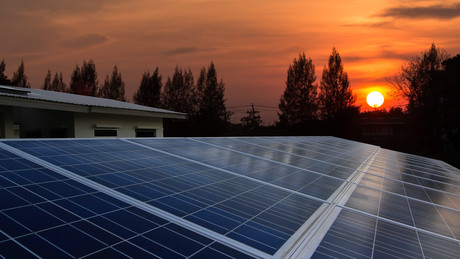The rise of rooftop solar in our carbon-free energy future

Customers will drive the transformation of Australia’s electricity sector as world-leading adopters of renewable energy resources.
The story of the evolution of Australia’s energy system often focuses on the role of large-scale wind and solar generation. While integrating large-scale variable renewable energy will be vital into the future, the rapid uptake of distributed energy resources such as solar and battery storage will be at the heart of this transformation.
The Electricity Network Transformation Roadmap developed by Energy Networks Australia and CSIRO is an evidence-based plan detailing what needs to be done during the next decade to provide Australians with secure and affordable energy and to decarbonise electricity by 2050. It forecasts up to 10 million Australian households and small customers will have distributed energy resources like solar, battery storage, smart homes and electric vehicles by 2050.
Analysis by CSIRO for the Roadmap shows that in Queensland, for example, rooftop solar panels are set to increase by more than 500% by 2030, with more than 10,000 MWh in small-scale battery storage. This means in 2030, just over a decade, Queensland’s electricity system would need to integrate the equivalent of 760,000 residential battery storage systems. By the same time, the state’s solar PV generation capacity would be almost as large as its current coal-fired generation capacity. This reflects both wider customer adoption of rooftop solar PV and larger system sizes as costs continue to fall.
While South Australia already leads the nation in the installation of new large-scale renewable generation and is set to become a leading installer of large-scale battery capacity, small-scale renewables and batteries will also play an important part in the years to come. The Roadmap found that South Australia’s rooftop solar panels will increase by more than 300% by 2030, with 4000 MWh of small-scale battery storage.


This incredible fleet of distributed energy resources would allow networks to buy grid support from customers instead of building their own infrastructure. The Roadmap forecasts the annual payments to customers could be worth $1.1 billion within 10 years. Orchestrating these new energy assets in the right place at the right time could save customers a total of $16 billion in network costs by 2050. However, reforms to electricity pricing are needed now.
The Roadmap finds it critical to move to fair and efficient network charges for residential and small customers before 2021. Combined with other Roadmap measures, pricing reform could help the average Australian household to save $414 per year in their electricity bills by 2050. Vulnerable customers would not be left behind. Tariff reform would be critical to ensuring a medium-sized family who can’t take up solar and storage is $350 per year better off in 2027.
Groundbreaking energy system analysis for the Roadmap found that, with the right policy settings and a national transition plan, Australia’s electricity system could achieve zero carbon emissions by 2050. The final Roadmap report follows two years of collaborative work carried out by Energy Networks Australia and CSIRO with key stakeholders. More than 200 representatives of consumers, new market entrants, retailers, government bodies and regulators contributed in co-design workshops.
Now for the hard part. Network businesses are initiating the Roadmap’s high-priority projects but timely action will also be needed by government if Australia is to keep the lights on and bills affordable as we transition to a cleaner energy system. A national approach to carbon and energy policy will support commercial investment as the household energy revolution continues to gather momentum. Australians are already playing their part by embracing new technologies and supporting action on climate change.
The final report of the Electricity Network Transformation Roadmap is available at www.energynetworks.com.au/sites/default/files/entr_final_report_april_2017.pdf.
Partnership brings innovative fuel solutions to Gippsland
A study by European Energy Australia and Opal at the latter's Maryvale Paper Mill will assess...
Data centres — a missed opportunity for sustainability
The question is no longer whether we need data centres, but how we plan, locate and govern...
Sodium-ion battery may provide greener energy
Scientists say sodium-ion batteries may be the answer to the future of sustainable energy storage...










